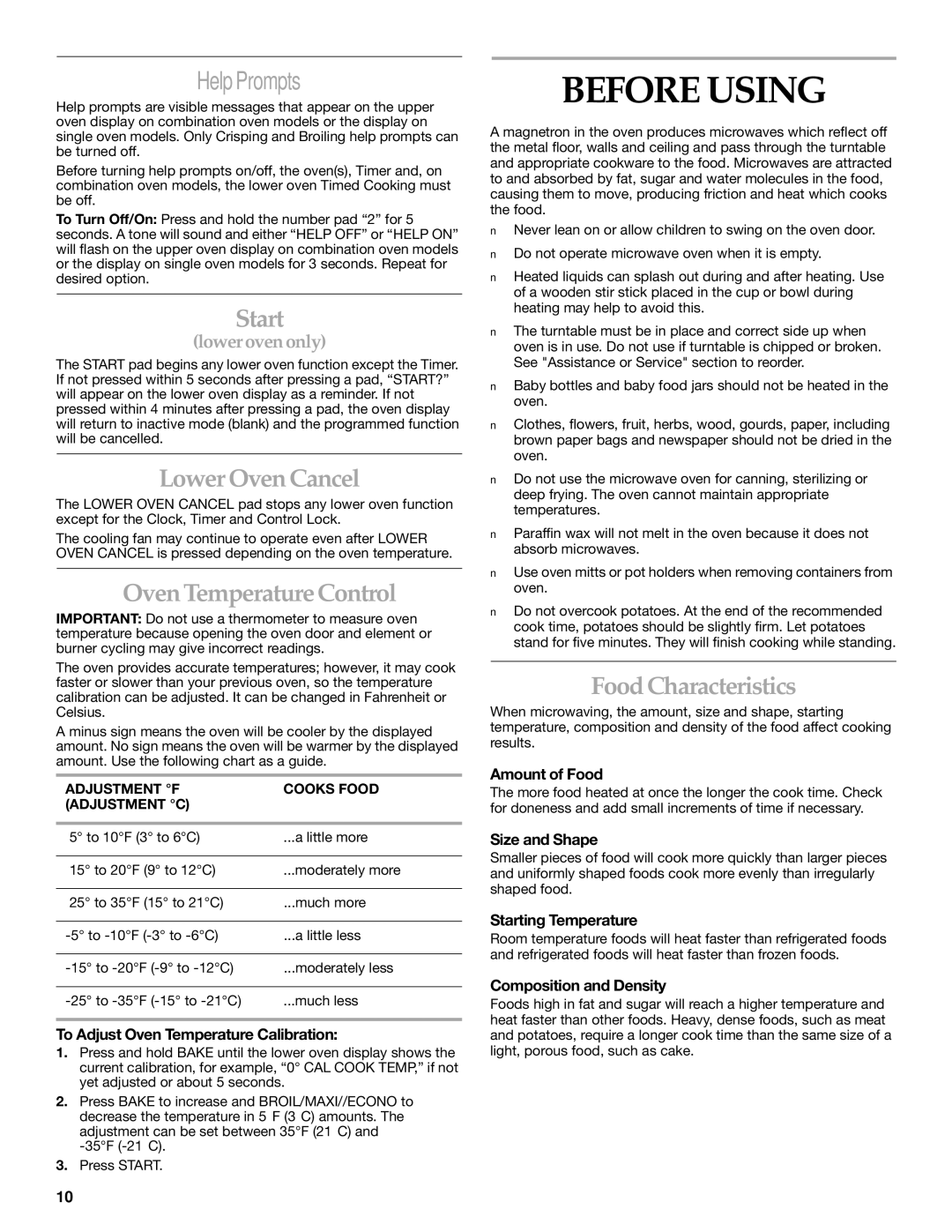KEMI371G, KEMI301G specifications
Whirlpool, a leading name in home appliances, has made a significant mark in the built-in kitchen appliance sector with their innovative models, the KEMI301G and KEMI371G. Both models are designed to enhance cooking experiences while providing a sleek, modern aesthetic to any kitchen.The Whirlpool KEMI301G is a compact built-in microwave that comes with user-friendly features and advanced technology. At the heart of its design is a powerful inverter that allows for precise temperature control, ensuring evenly cooked meals. This model offers multiple cooking modes, including microwave, grill, and convection, which provide versatility for different culinary needs. The KEMI301G features an intuitive control panel that makes it easy for users to navigate settings, adjust cooking times, and select the desired power level with just a few clicks.
In addition to its cooking functionalities, the KEMI301G is designed for optimal space efficiency. With a compact size, it fits perfectly in smaller kitchens without compromising on performance. Its sleek stainless steel finish not only enhances its visual appeal but also makes cleaning a breeze. The integrated design helps minimize clutter, allowing for a seamless look in any kitchen decor.
On the other hand, the Whirlpool KEMI371G is a larger built-in oven that is ideal for those who enjoy cooking for family and friends. Boasting a generous capacity, it allows for multiple dishes to be cooked simultaneously. The KEMI371G incorporates Whirlpool's unique 6th Sense technology, which automatically adjusts cooking parameters based on the type of food being prepared, ensuring optimal results every time. The oven also features a range of cooking modes, including conventional, grilling, and fan cooking, enabling users to experiment with various recipes.
Safety and ease of use are paramount in the design of both models. The KEMI301G and KEMI371G are equipped with child lock features to prevent accidental operation, making them safe for family use. Additionally, both models come with easy-to-clean interiors that resist stains and odors, ensuring a hygienic cooking environment.
In summary, Whirlpool's KEMI301G and KEMI371G embody the perfect balance of style, functionality, and technology. Their innovative features cater to the needs of modern culinary enthusiasts, providing an efficient, convenient, and enjoyable cooking experience. With their compactness and user-centric designs, these appliances are sure to fit seamlessly into any contemporary kitchen setup.

